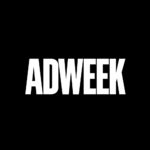Posted on 30 July 2020 in Industry News
 Original article by AdWeek: GroupM Unveils Global Effort to Boost Crisis-Stricken Local News
Original article by AdWeek: GroupM Unveils Global Effort to Boost Crisis-Stricken Local News
The media-buying giant is partnering with United for News to ‘remonetize’ outlets
By Ethan Wu
Key insights:
- The scheme aims to connect big brands with smaller communities via localized, quality content.
GroupM, the world’s largest media buyer, is rolling out an industry effort to steer programmatic ad dollars toward dwindling local news shops in what it is characterizing as a bid to “save journalism.”
It’s another industrywide attempt to funnel more digital spend to local publishers as those news businesses continue searching for a lifeline, especially amid the Covid-19 pandemic that has crippled local advertising.
GroupM’s so-called Local News Inclusion List will offer advertisers a collection of “brand-safe” local outlets across 31 countries, including the U.S., U.K., South Africa and Brazil. The initiative is a joint effort between GroupM and United for News, a partnership between nonprofit Internews and the World Economic Forum.
For American local media, the initiative expands on the recently launched Local News Advertising Inclusion List, with participants including Gannett and the Los Angeles Times. In doing so, GroupM hopes to create the first, single worldwide framework for local media inclusion listing.
“Local news is facing extinction,” Jason Lambert, senior director for media business at Internews, told Adweek. Covid-19 is creating new content costs for local news outlets even as ad revenue has dried up. This dynamic is “forcing news publishers the world over to the brink of ruin,” he said.
Advertisers, too, will feel the fallout of local news disintegrating, Lambert noted. “We’ve seen the increased quality of a hard news environment. We are going to lose a lot of that [ad] inventory because these organizations are going out of business,” he added.
Local advertising can also help big brands, like Unilever, Nestlé and Ford, connect with their audiences. “That’s still where the people are,” said John Montgomery, global vp of brand safety at GroupM. “There’s a trusted ambiance [to local news] that rubs off on the brand.”
The viability of local news funding models—often still dependent on print advertising—has long been in crisis.
There’s also reader pressure for local news organizations to be more online. In 2019, the number of Americans who said they prefer to get local news online was nearly the same as those who tune in to their local TV for that news, according to the Pew Research Center.
Industry efforts launched in recent months aim, in part, to put more money where these audiences are. The Local News Advertising Inclusion List, a project of the Local Media Consortium and Scott Cunningham, founder of the IAB Tech Lab, launched in April to connect local U.S. publishers with national advertisers. (It launched as the Local News Advertising Whitelist, before dropping the now disfavored term.)
Along similar lines, the supply-side platform TripleLift has built a local news private marketplace to link its 1,600 news sites to ad buyers. GroupM has signed on several clients to the program, called Help Journalism, nudging them toward the 600 or so U.S.-based local outlets on TripleLift’s platform.
Private marketplaces, or PMPs, are arrangements where select publishers sell their ad inventory to select advertisers. In contrast, an inclusion list is a vetted selection of publishers—essentially a stamp of approval for any advertiser who can access the list.
Mindshare, the largest media agency within GroupM, announced this month a PMP for Black creators and news outlets, including some local news outfits like the Atlanta Black Star. It followed a similar endeavor in February to launch a PMP focused on LGBTQ outlets.
When asked about the choice of a PMP over an inclusion list, a Mindshare spokesperson told Adweek that “a PMP [allows] you to more directly impact investment while also ensuring quality parameters are upheld. That said, from the start, our goal was always that this concept should move beyond Mindshare and create an industry groundswell.”
“The early thinking was that we’d create a PMP, but the practicalities of doing that were just quite significant,” Lambert said. “The real aim we have is just to get people to use the list and not necessarily creating a business ourselves.”
The inclusion list is, for now, only focused on programmatic display ads but could expand later to include video, according to Montgomery. The World Association of Newspapers and News Publishers and OMD Worldwide—which Adweek has twice named Global Media Agency of the Year—have also joined the effort.
